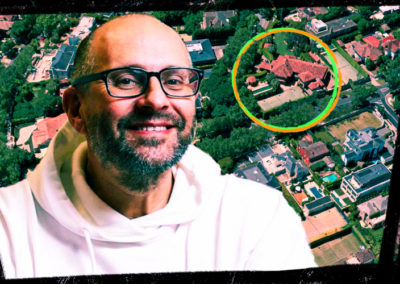Lindsay Fox has been on the rich list since it was first established in 1984 and has remained there ever since. Every time you “pass another fox”, you are passing one of 5000 vehicles in Lindsay Fox’s trucking and logistics empire underpinned by privileges of the grandfathered exemption, an exemption from disclosing financial statements.
| Top 200 Rich List (2020) | No. of Dark Companies: 4 | Political Donations since FY 1998-99 |
|---|---|---|
| Rank: 23 | Linfox Proprietary Limited (SGE) | Labor Party: $323,730 |
| Wealth: $3.72b | FCL Interstate Transport Services Pty. Ltd. | Coalition: $203,000 |
| Wealth (2019): $3.31b | Linfox International Group Pty Ltd | Independent: $0 |
| YoY wealth change: 12.6% | Fox Group Holdings Pty Ltd | Total: $526,730 |
Lindsay Fox built his empire from the ground up. A high school dropout, Fox bought his first truck when he was 19 and proceeded to establish one of the largest Australian-based transport and logistics businesses.
Although his empire was forged from humble beginnings, Fox is not immune to the foibles that come with extreme wealth. He was fined $20,000 for illegally removing native vegetation from his waterfront property last year. The land office granted him a 45m expansion of the beachfront of his property in 2013, which increased the value of the property by $5 million. He is currently in dispute with his local council seeking a further expansion of the beachfront of his Portsea mansion.
While Lindsay Fox has four Dark Companies, one of these companies, Linfox Proprietary Limited, is a significant global entity (see explainer below). This essentially overrides its grandfathered status, requiring it to lodge its accounts with ASIC. According to figures obtained from Tax Office transparency data, Linfox Proprietary Limited has generated $12.9 billion of income over the past six years. Taxable income was $865.2 million and they have paid $249 million in corporate income tax since the 2013-14 financial year.
Fox holds two Australia day honours. In 1992 he was appointed an “Officer of the Order of Australia,” and in 2008, he was appointed a “Companion of the Order of Australia”.
Staff writers who have worked on one or more of our special investigative projects include Zacharias Zsumer (War Powers), Stephanie Tran, Tasha May and Luke Stacey.


































